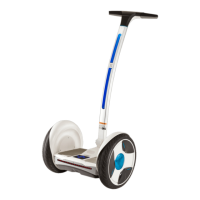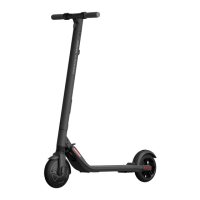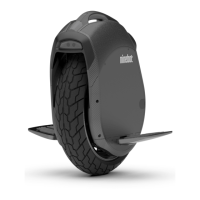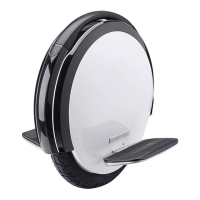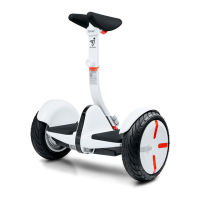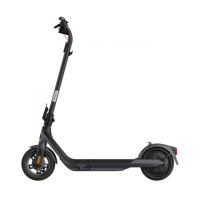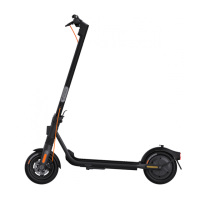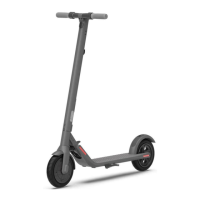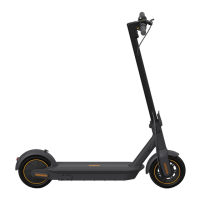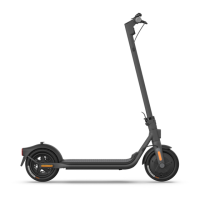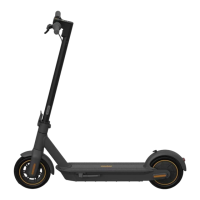18
Guide for Safe Riding
WARNING
Whenever you ride the Ninebot PTR, you risk death or serious injury from loss of control, collisions, and falls. To reduce risk of injury,
you must read and follow all instructions and warnings in the user materials. To reduce risk of injury, users must also watch and follow
all instructions and warnings in the Safety Instruction Video before they ride.
This section describes how to ride the Ninebot PTR. It discusses riding for the first time and gives guidelines and helpful hints for all
rides. It is important that you practice these riding instructions in a controlled, familiar environment until you are comfortable using
your PTR and Keyfob.
Before Riding
• Understand and comply with local traffic rules.
• Always wear an approved helmet that fits properly with the chin strap in place. Consider using additional protective gear.
• Do not wear loose clothing or jewelry that could get caught in the PTR.
• Make sure your PTR is correctly assembled and the battery is charged. See Ninebot Assembly.
• Check your Ninebot to make sure that there are no loose/damaged parts/fasteners, and that the tires are properly inflated.
• Check the battery charge level with the remote keyfob before each ride. Be aware of the charge level while riding and do not
attempt long trips with less than 40% charge level remaining.
• If you encounter any abnormal sounds or safety warnings during riding, stop and investigate. Do not proceed until the
situation that prompted the safety warning has been resolved.
• You must be mentally alert to safely ride a PTR. Do not attempt to ride if you are ill or if you cannot fully comply with the
instructions and warnings in this User Manual. Do not ride under the influence of alcohol or drugs.
• Do not place any objects on the Mats. This could cause the PTR to move on its own in Balance Mode, possibly damaging your
PTR and rendering it unsafe for use. Instead, place them in approved front or side storage cases, or in a backpack.
• Do not allow anyone to ride the PTR unless they have carefully read this Manual and watched the Safety Instruction Video.
• Do not use the PTR in hazardous environments. The PTR has not been certified for use in hazardous atmospheres as
defined in NFPA 70, National Electric Code. Hazardous environments are locations where fire or explosion hazards may exist
due to flammable gases, vapors, liquids, dust, or fibers.
